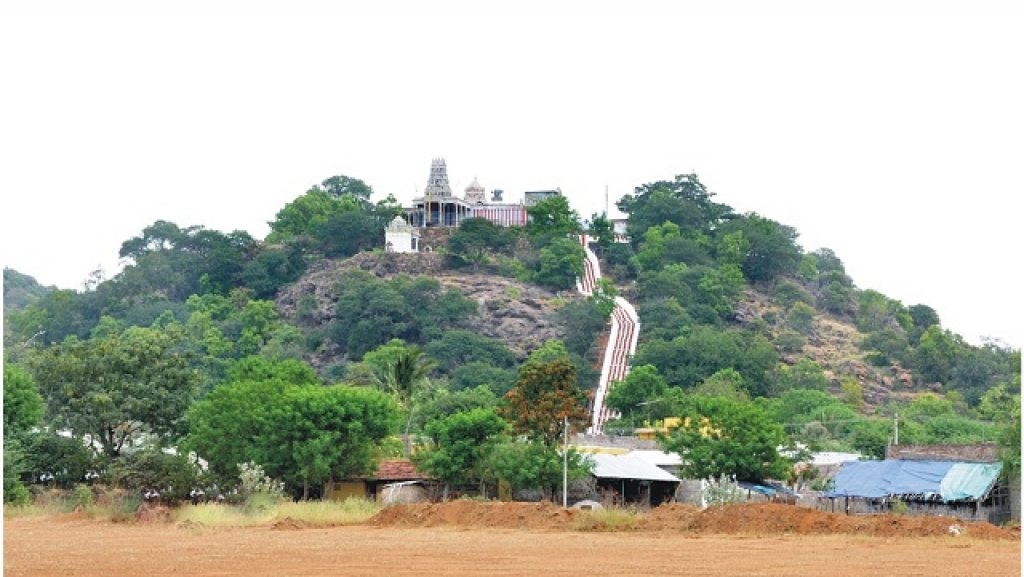
- Jan 25 2016
- Admin
- 12
- 3332
- Travel
National Park
Geological lstudy shows that more than 120,000,000 years ago, the sea (which lies today about 100 k.m. East of Sathanur) had transgressed as far as 8to 10 km West of Sathanur. During this period which is Geologically knownj as the cretaceous, the sea abounded in a variety of marine animals similar to those found in the present day sea. These animals, after death;, sank to the bottom and were buried by sands and clays brought down by the rivers. Along with them some of the trees which flourished on the seacoast or near shore were also buried after transport by flooded streams and were petrified in course of time. The large trunk of petrified tree, which can be seen here, lies within the Trichirappalli group of rocks of about 100,000,000 years ago. This tree shows the presence of Conifers (The non flowering plants) that dominated the land vegetation prior to the advent of Angiospems (the flowering plants of the present of lday). The petrified tree trunk at Sathanur measures over 18 meters in length Similar fossil trees measuning a few meters in length are found along the stream sections near Varagur, Anaipadi, Alundalipur and Saradamangalaml. Dr.M.S.Krishnan of the Geological Survey of India first reported this fossil tree in 1940.
Read more- Jan 25 2016
- Admin
- 12
- 3332
- Travel
Ranjangudi Fort
Ranjankudi Fort is a 17th-century fortress located about 22 km (14mi) north of the town of Perambalur,Tamil Nadu India. The fort is located 22 km north of Perambalur NH 45 in the South Indian state of Tamil Nadu. It is located 253 km (157mi) away from the state capital Chennai and 70 km (43 mi) from Trichy .The fort was constructed by feudatory Nawab of the Carnatic. Ranjakudi fort was the focus point during the Battle of Valikondah during 1751, when the British troops supported by Mohammed Ali won over the French supported by Chanda Sahib. The fort is oblong in shape with semicircular bastions, a moat encircling it and three fortifications at different levels, built with cut stone blocks. The fort has a palace, residence buildings, underground chamber and an underground passage that links Pettai (the top level) with Kottai Medu (lower level). The fort, in modern times, is maintained and administered by the Archaeological Survey of India.The fort is one of the prominent tourist destinations in Perambalur.
Read more- Jan 25 2016
- Admin
- 12
- 3332
- Travel
Arulmigu Mathura Kaliamman Temple
The renowned temple of Arulmigu Mathura Kaliamman at Siruvachur located 50 kms from Trichy and 8 kms from Perambalur has an antiquity dating back to 1000 years. Large number of devotees throng this temple on Mondays and Fridays to worship the powerful deity and seek her divine blessings. According to tradition Chelliamman was the local deity of Siruvachur. An evil magician through his intense devotion to the deity won her favour. Pleased with his devotion, Chelliamman granted him any boon he wished. The cruel sorcerer wished that the deity should be his servant and do his bidding at all times. Bound by the power of her own boon Chelliamman had no other option but to obey all his evil commands. At this time Kannagi the embodiment of virtue and chastity happened to visit Siruvachur. Kannagi was the devoted wife of Kovalan, a merchant. The happy couple led a blissful life till Kovalan in the course of his travels met Madhavi a beautiful danseuse. Enamored by her grace Kovalan started living with her and spent all his wealth on her. This went on for over a year during which he had a daughter Manimegalai through her. When his resources were exhausted Kovalan realized his folly and returned to his devoted wife Kannagi. The couple went to Madurai to eke out their livelihood. Kovalan, hard pressed for money, tried to sell one of the precious anklets of his wife. The anklets resembled those of the queen of Madurai and so Kovalan was charged with theft and swiftly beheaded by the king without even a trial. On hearing this, Kannagi seething with anger rushed to the king’s court and accused him of taking an innocent man’s life by his hasty and unjust ruling. With fuming rage she took out the other anklet and threw it down. All at once, by the power of her chastity the entire city of Madurai went up in flames.
Read more- Jan 25 2016
- Admin
- 12
- 3332
- Travel
Arulmigu Ekampareshwarar And Thandayudhapani Temple
In the earlier days this place was surrounded by a canopy of kadamba trees. The Chola king was ruling, having uraiyur as capital. At that time, a Trader from his region, went towards Northern side, from uraiyur, to trade. When he reached kadambavanam, it was dusk and dark. So, he decided to stop his journey and rest there. He climbed up and sat on a Banyan Tree. A Flash of light appeared suddenly like a fire in the midnight, which was in the form of Shivlinga amid the Lords and Saints, worshipping, then it disappeared. This wonderful scene was witnessed by the trader. Out of astonishment, the trader returned back to his native place uraiyur, to inform the chola king in the dawn. Reaching Uraiyiur, the trader described that spiritual scene to the Great king parandaha cholan, in his palace. Kulasekara pandian, the honorable guest to chola king heard about the miracle. The chola and pandian king along with the trader and soldiers reached kadambavanam. The searched for the shivalinga in all directions. At that time, an old man with a sugar cane in his hand, revealed them the place of linga, shivering and disappeared at once, as a flash of light, in the Eastern side. The Kings were astonished to see at a distance a small hill on which Lord Muruga stands as Thandayuthapani with a sugar cane. Both the kings were almost immersed in Bhakthi and Kulasekara pandian constructed (built) both the Ekambareswarar and Thandayudhapani temple at a time. Kovalan, the virgin lady kannagi’s husband was put to death and she out of anger, cursed Madurai and made into ashes. On her journey towards Northwest passed Lord Thandayuthapani’s temple where she was pacified and blessed her to go to siruvachur and have the incarnation as madurakali and bless the devotees.
Read more








